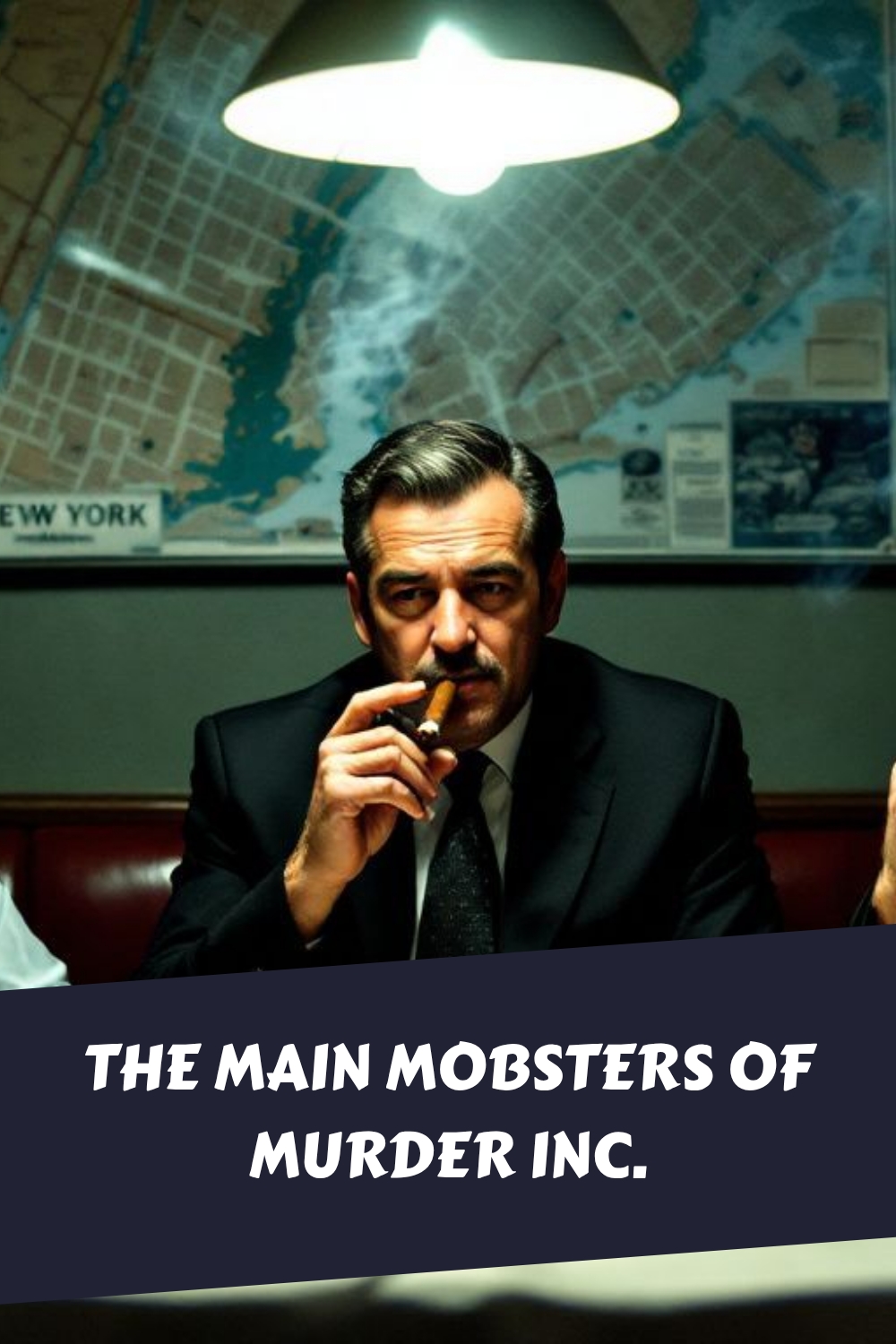Are you interested in the main mobsters in organized crime‘s landscape? You might be trying to comprehend how some individuals rose to prominence in such a perilous existence. One noteworthy fact is that as some of the main mobsters of the mafia, Albert Anastasia, Lucky Luciano, and Vincent Mangano played pivotal roles.
They were instrumental in shaping what is now recognized as the Mafia’s dark history.
This article will provide insights on these individuals and their collective known as Murder Inc. We will probe their identities as the main mobsters, their actions, and their lasting impact on crime history.
This includes reviewing renowned mob families like the Gambino family, among others that continue to inform contemporary narratives. Eager to journey back in time? Continue reading!
Key Takeaways
- Albert Anastasia, Lucky Luciano, and Vincent Mangano were big names in their roles as the main mobsters in the Mafia. They ran Murder Inc., a gang that did hit jobs. Anastasia was known for being very tough. Luciano helped start the American Mafia and made it work better with other crime families. Mangano led the Gambino family but didn’t get along with Anastasia.
- Murder Inc. used fear and violence to control areas in New York City. They had skilled killers do the dirty work for the main mobsters. This group also got into unions, gambling, narcotics trafficking, and blackmailing people in power.
- These mob bosses faced trials but often avoided long jail terms because witnesses were too scared to talk against them. The law eventually caught up with some through landmark cases like Luciano’s prostitution ring trial.
- Their lives and crimes have a big influence on movies, books, and TV shows today. Stories about these mobsters make us see them as both villains and fascinating figures.
- Laws like the RICO Act were made to fight organized crime because of how structured criminal activities became due to people like Anastasia, Luciano, and Mangano.
Introducing The Main Mobsters
Albert Anastasia
Albert Anastasia (born Umberto Anastasio, 1902–1957) was the true force behind Murder, Inc., He served as its head, thus one of the main mobsters and most feared figures in organized crime history. Murder, Inc. was a contract killing organization that enforced the will of the National Crime Syndicate, executing between 400 and 1,000 murders across the United States. Anastasia earned fearsome nicknames such as The Mad Hatter and Lord High Executioner and later became the boss of the Mangano family, which evolved into the Gambino crime family.
Lucky Luciano
Charles “Lucky” Luciano was not a member of Murder, Inc. but rather its architect and benefactor. As the top leader of the American Mafia thus also one of the main mobsters after the Castellammarese War (1930–1931), Luciano created the National Crime Syndicate—a loose confederation of crime families—and delegated Murder, Inc. as its enforcement arm. He relied on Anastasia and Louis “Lepke” Buchalter to run day-to-day operations and maintain discipline through targeted killings.
Vincent Mangano
Vincent Mangano, boss of one of the original Five Families, was Anastasia’s superior before their relationship soured. While Mangano’s crime family provided structure for Anastasia’s rise and was tangentially linked to Murder, Inc., he was not directly involved in its operations. Mangano resisted some of Luciano’s modernization efforts, preferring traditional mafia structures and values as one of the main mobsters.
SHOP NOW ZAZZLE - CLICK BELOW
Summary Table
| Mobster | Role in Murder Inc. | Other Roles | Fate |
|---|---|---|---|
| Albert Anastasia | Direct leader, operational head | Later boss of the Gambino family | Assassinated in 1957 |
| Lucky Luciano | Founder and overseer through National Crime Syndicate | Architect of modern Mafia system | Deported to Italy (d. 1962) |
| Vincent Mangano | Peripheral link via family hierarchy | Original boss of the Mangano family | Disappeared 1951, presumed murdered |
While Luciano conceived the idea and Anastasia directed its lethal arm, Mangano’s involvement was limited. The principal mobsters of Murder, Inc. were Albert Anastasia and Louis “Lepke” Buchalter, under Luciano’s umbrella, not Mangano.
In Depth on The Main Mobsters of Murder Inc.

The main faces of Murder Inc. were not just any gangsters. Albert Anastasia, Lucky Luciano, and Vincent Mangano as some of the main mobsters pulled the strings behind some of the darkest deeds in New York’s history.
Albert Anastasia one of the Main Mobsters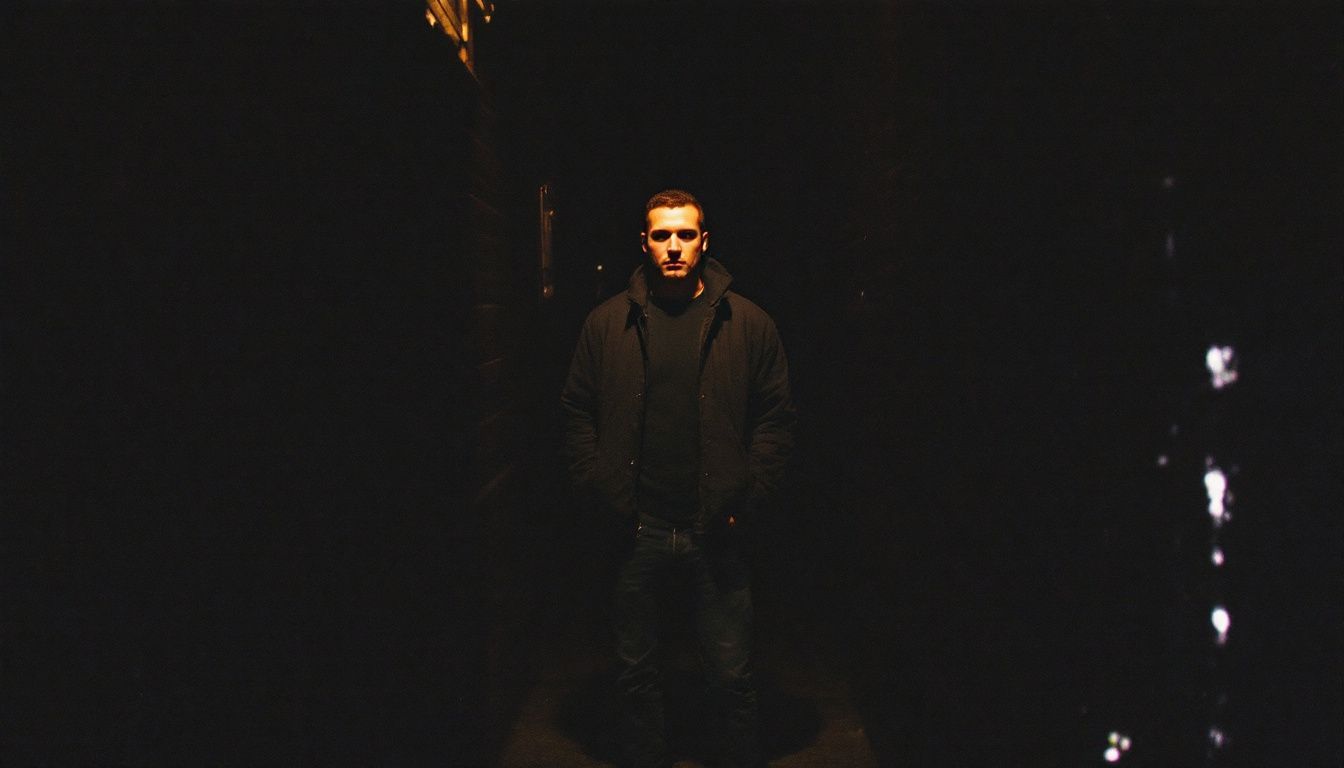
Albert Anastasia was a prominent figure in Italian-American criminal activities. He significantly contributed to the establishment of what is currently recognized as the American Mafia. He was one of the main mobsters and the leader of Murder, Inc. This was a gang responsible for carrying out assassinations for the mob and the main mobsters.
Albert Anastasia was the driving force and operational head behind Murder, Inc., the secret enforcement arm of the National Crime Syndicate during the 1930s and early 1940s. While Lucky Luciano and Meyer Lansky were the masterminds behind creating the Syndicate. It was Anastasia who transformed Murder, Inc. into a disciplined and terrifyingly efficient killing organization that handled contract murders nationwide.
Formation and Leadership
After proving loyal to Luciano during the Castellammarese War, Anastasia was rewarded with co-leadership of Murder, Inc. alongside Louis “Lepke” Buchalter. Anastasia supervised Italian hitmen while Buchalter managed the Jewish side, often coordinating through Abe Reles, who sourced assassins from Brooklyn’s Brownsville neighborhood. The group operated from the back room of Midnight Rose’s Candy Store, carrying out assassinations ordered by The Commission.
Methods and Reputation
Anastasia’s reputation was so fearsome that his nicknames—“The Mad Hatter” and “The Lord High Executioner”—became emblematic of his brutality. Murder, Inc. is estimated to have committed between 700 and 1,000 murders, most unsolved due to Anastasia’s use of secrecy, loyalty, and intimidation to maintain silence. Unlike many mob leaders, Anastasia was known to personally participate in killings, reinforcing his image as a commander, an executioner and one of the main mobsters.
Anastasia’s life was intense and fraught with peril. He played a major part in the downfall of Masseria, altering the dynamics of power in New York’s criminal networks. Despite facing murder charges thrice, he consistently evaded incarceration.
His battles were not confined to the streets; he also participated in contests of authority. Vincent Mangano, a fellow mob boss, was threatened by Anastasia’s growing influence within Murder Inc.
This conflict demonstrates the challenging and intimidating power struggles among mob families at that time. Anastasia’s story forms a part of New York City’s shadowy history, highlighting the expansion of organized crime along the Brooklyn waterfront and further afield.
The major murders attributed to Anastasia or his crew
Several high-profile murders and disappearances from the 1920s through the 1950s are directly attributed to Albert Anastasia or his Murder, Inc. crew, reflecting his role as the Syndicate’s “Lord High Executioner.” These killings often targeted witnesses, rivals, or anyone deemed disloyal to Mafia interests.
Early Murders
Anastasia’s violent career began in the early 1920s when he was arrested for the murder of George Turino in Brooklyn in 1921. Although sentenced to death, his conviction was overturned after witnesses recanted, a pattern that would repeat throughout his life as witnesses conveniently vanished or refused to testify. He was also suspected in several Brooklyn homicides between 1922 and 1930, including the deaths of Vincenzo Busardo, Carmine Cenatiempo, and John Torres, though no convictions followed.
Labor and Waterfront Murders
By the 1930s, Anastasia had become one of the recognized main mobsters and the Syndicate’s enforcer on the Brooklyn docks. He was strongly linked to the 1939 murder of labor organizer Peter Panto, who had campaigned against dockside corruption. Panto was abducted and strangled; his body later found buried in New Jersey wetlands. This hit solidified Anastasia’s reputation for silencing dissent within the labor unions tied to the mob.
Murder, Inc. Operations
During his command of Murder, Inc., hundreds of contract killings nationwide were attributed to his organization. Victims included witnesses, traitors, and rival mobsters, many buried in unmarked graves. While Jewish mobster Louis “Lepke” Buchalter oversaw organization and payment, Anastasia coordinated executions. His subordinates, like Abe “Kid Twist” Reles and Harry “Pittsburgh Phil” Strauss, carried out numerous murders under his authority.
The Arnold Schuster Murder
One of his most infamous personal orders came in 1952 when Anastasia allegedly ordered the killing of Arnold Schuster, a 24-year-old Brooklyn store clerk who had helped police capture fugitive bank robber Willie Sutton. Schuster’s murder shocked the public because he was a civilian uninvolved in organized crime, and it outraged other Mafia bosses who saw it as reckless exposure of their world.
Vincent and Philip Mangano Murders
Anastasia is also widely believed to have orchestrated the disappearance of his own boss, Vincent Mangano, and the murder of Mangano’s brother, Philip, in 1951. Philip’s body was found shot multiple times, while Vincent vanished entirely. Although never proven, the consensus among historians and law enforcement is that Anastasia personally arranged or participated in both killings to seize control of the family that would later bear the Gambino name.
Lucky Luciano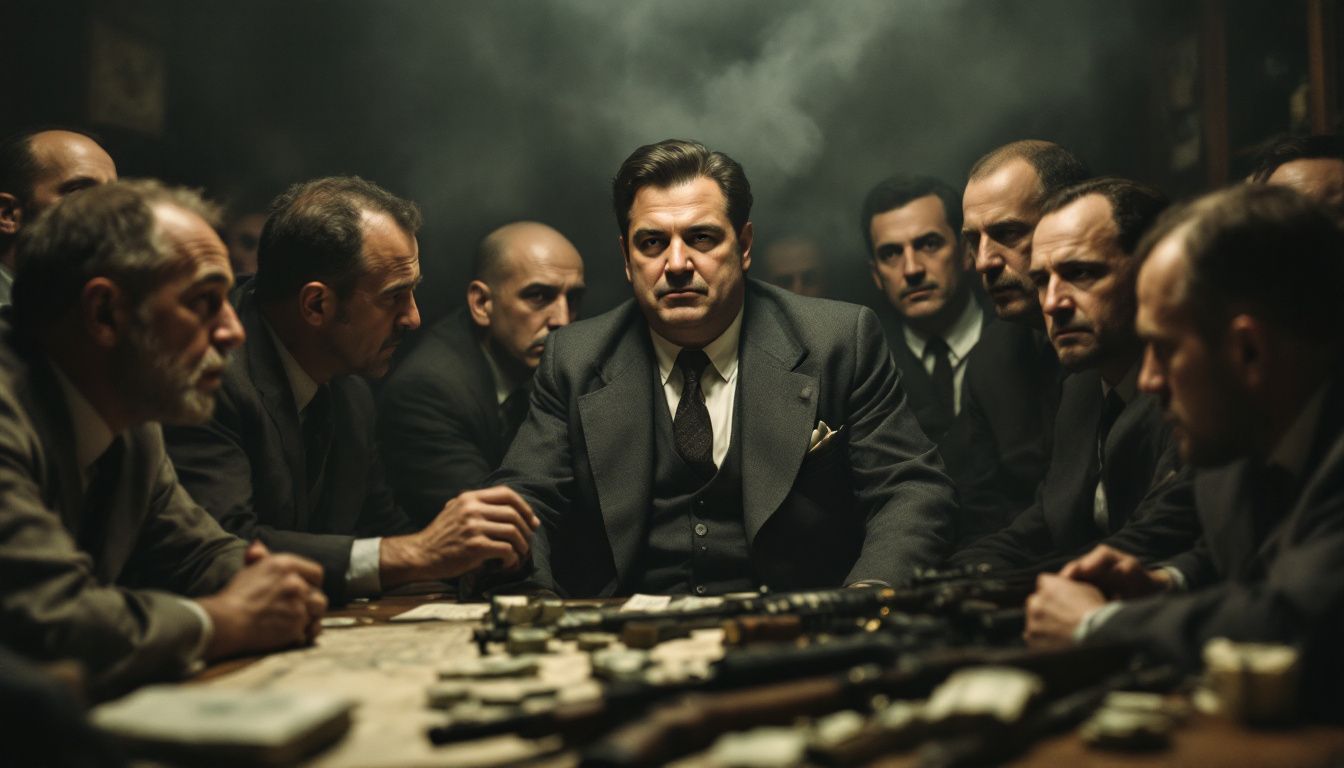
Lucky Luciano (born Salvatore Lucania, November 24, 1897 – January 26, 1962) was the founder of modern American organized crime. He is one of the main mobsters is widely regarded as the architect of the National Crime Syndicate and the Commission system that governs the Mafia.
Lucky Luciano was a key player as one of the main mobsters in the American Mafia’s creation. He had a big role in killing Masseria, which changed power in the Mafia. This move led to him helping start modern organized crime groups.
Luciano also worked with Jewish mobsters like Meyer Lansky. Together, they built a strong crime network that included gambling and drug trades across many places. His plans helped form the National Crime Syndicate, linking Italian-American and Jewish criminals.
His smart moves made sure he stayed powerful among other mob leaders like Joe Adonis and Frank Costello. Even though Vincent Mangano didn’t like him much, Luciano kept leading his family to success in illegal activities until his arrest.
Rise to Power
Luciano immigrated from Sicily to New York as a boy and joined the criminal underworld through the Five Points Gang, later partnering with bootleggers like Meyer Lansky, Bugsy Siegel, and Frank Costello during Prohibition. Dissatisfied with the old Mafia’s blood feuds, he orchestrated the murders of his bosses Joe Masseria and Salvatore Maranzano during the Castellammarese War (1930–1931), ending decades of internecine violence and paving the way for a new order.
The Commission and National Crime Syndicate
With Maranzano’s death, Luciano set up The Commission, in 1931 this group let different mafia families work together without fighting. The Commission was a council of family bosses designed to resolve disputes and coordinate national crime operations. This revolutionized Mafia structure, replacing the “boss of bosses” concept with a corporate-like system. Working with Lansky, he extended this model into a multi-ethnic alliance called the National Crime Syndicate, which integrated Italian, Jewish, and Irish mob groups under one cooperative criminal network.
Crimes and Conviction
Luciano’s empire included racketeering, gambling, narcotics, and prostitution. In 1936, prosecutor Thomas E. Dewey convicted him on 62 counts of compulsory prostitution, and he was sentenced to 30–50 years. Despite imprisonment, Luciano remained influential as one of the main mobsters. His lieutenants, such as Costello and Vito Genovese, continued running operations in his name.
Wartime Operations and Deportation
During World War II, the U.S. Navy secretly enlisted Luciano’s help to prevent sabotage on New York’s waterfront (Operation Underworld). His assistance contributed to the commutation of his sentence, and in 1946 he was deported to Italy. He later briefly settled in Cuba, organizing the famous Havana Conference of 1946, before pressure from U.S. authorities forced his return to Italy.
Luciano’s key reforms to the Mafia’s structure
Lucky Luciano’s key reforms fundamentally transformed the Mafia from a loose collection of feuding gangs into a highly organized and cooperative criminal syndicate. Here are his most significant innovations:
Abolishing the “Boss of Bosses” Title
Luciano eliminated the autocratic “capo di tutti capi” (boss of all bosses) position, which had fostered destructive rivalries and power struggles. Instead, he insisted on a system of shared leadership among crime families to reduce personal ambition as a source of mob violence between many of the main mobsters and their lieutenants.
Establishing The Commission
Luciano’s most important reform was the creation of The Commission in 1931, a governing board made up of the most powerful crime family bosses from across the U.S.. The Commission:
-
Served as a “board of directors” to oversee major mob decisions and settle disputes peacefully.
-
Regulated inter-family territory, operations, and membership to avoid mob wars.
-
Approved high-profile murders and transfers of leadership, acting as the final authority on Mafia policy.
The Five Families System in New York
Luciano formalized the structure of the Five Families in New York City—Genovese, Gambino, Lucchese, Bonanno, and Colombo—each with a hierarchy of boss, underboss, consigliere, capos, and soldiers. Each family controlled its own territory and rackets, but all answered to The Commission for inter-family issues.
Inclusion of Non-Italians in Syndicate Business
Luciano’s reforms enabled cooperation with non-Italian criminals, especially Jewish and Irish mobsters like Meyer Lansky and Bugsy Siegel, to maximize criminal profits nationwide. This was a major break from the old Sicilian tradition and helped form what became known as the National Crime Syndicate.
Adoption of Strict Rules and Omertà
Luciano preserved and strengthened the code of omertà (silence), demanding absolute loyalty and secrecy from all Mafia members, and codified a set of rules to govern behavior and resolve conflicts.
These reforms brought unprecedented order, efficiency, and profitability to American organized crime, and the structure Luciano built continued to define the Mafia for decades.
Luciano deported to Italy
Lucky Luciano was deported from the United States to Italy in 1946 following the commutation of his prison sentence by New York Governor Thomas Dewey. His deportation marked the end of his direct presence in American organized crime, but not his influence, which continued from abroad.
Deportation from the United States
Luciano was escorted aboard the U.S. freighter Laura Keene on February 9, 1946. The voyage departed from a secure dock heavily guarded by longshoremen loyal to the Mafia, who kept the press at bay. Before departure, Luciano’s closest criminal associates, including Meyer Lansky, Frank Costello, Albert Anastasia, Bugsy Siegel, and Tommy Lucchese, attended a private farewell party on the ship. The vessel transported him across the Atlantic to Genoa, Italy, where he arrived under escort.
Early Years in Italy and Cuban Interlude
After arriving in Genoa on April 11, 1947, Luciano was arrested by Italian authorities but soon released with orders to stay out of trouble. Later that year, he secretly traveled to Cuba, where he settled at the Hotel Nacional de Cuba in Havana. There he held the famous Havana Conference with top American mobsters to reaffirm control and reorganize the Syndicate’s operations. However, pressure from U.S. narcotics authorities, led by Harry Anslinger, forced Cuba to expel Luciano in early 1947. He was deported again, this time aboard a Turkish freighter bound for Italy.
Life Under Surveillance in Italy
Once back in Italy, Luciano lived mostly in Naples under continuous surveillance as one of the main mobsters. Italian authorities placed travel restrictions on him, at times requiring that he report weekly to police and remain home at night. Despite restrictions, Luciano allegedly oversaw aspects of the international heroin trade, coordinating shipments that moved through Italy and France on their way to the United States, in what later became known as the “French Connection” network.
He lived with his companion, Italian ballerina Igea Lissoni, until her death in 1959, leading a relatively quiet but supervised life.
Death and Legacy
On January 26, 1962, Luciano died of a heart attack at Naples’ Capodichino Airport while meeting a film producer about a biographical project. His body was returned to New York and buried in St. John’s Cemetery in Queens, under his birth name, Salvatore Lucania.
Though exiled, Luciano’s deportation did not end his reach; his influence continued through protégés such as Vito Genovese and Carlo Gambino, solidifying his legacy as the mastermind who created the Mafia’s lasting corporate structure.
Another one of the Main Mobsters, Vincent Mangano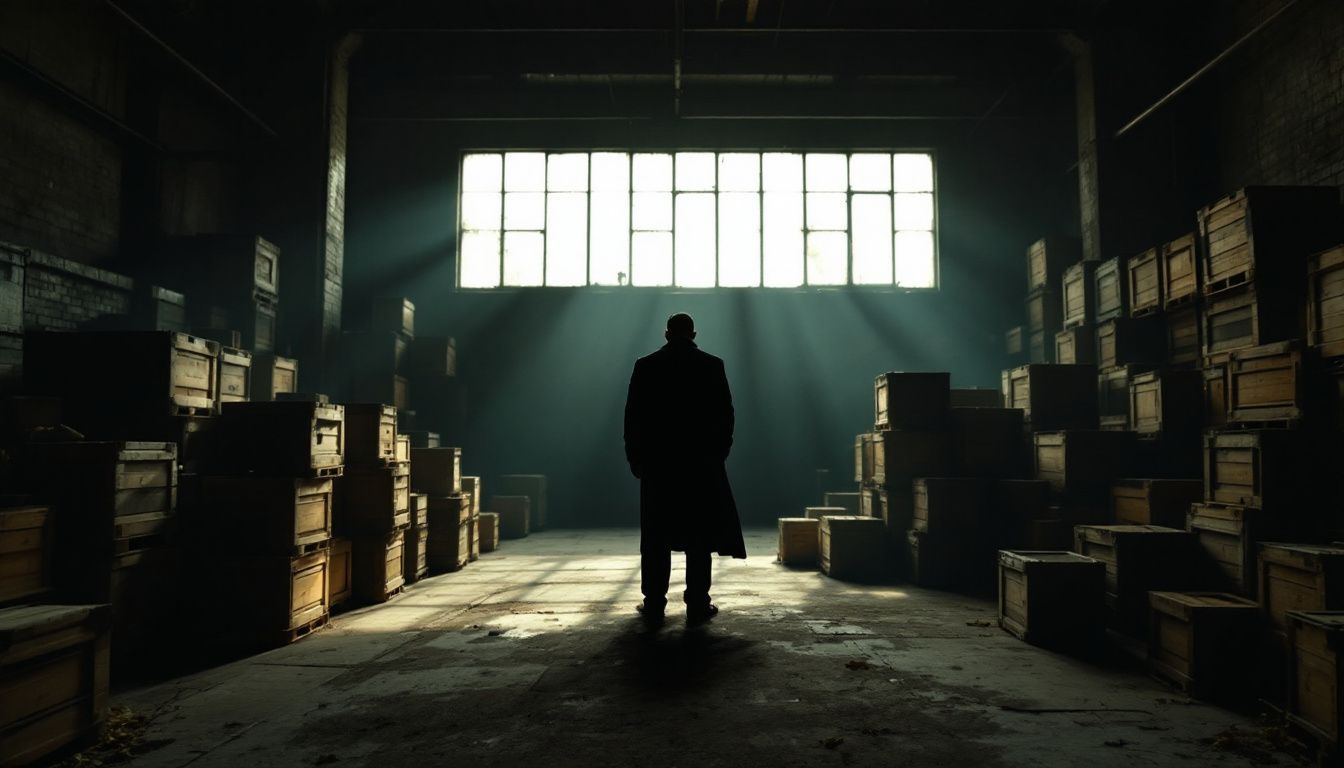
Transitioning from Luciano, we discover Vincent Mangano in a crucial role during the rise of organized crime. He served as a pivotal participant in the development of the intimidating group, The Gambino crime family.
Mangano ruled his organization sternly, gaining notoriety due to his intense rivalry with Albert Anastasia, who was closely connected to Murder Inc.
Mangano established his operations in Brooklyn and managed it for over two decades. His leadership played a significant role in shaping the trajectory of organized crime in New York City.
Nevertheless, his skepticism and animosity for Anastasia characterized much of his leadership tenure, initiating a series of conflicts within the Mafia community that resonated long after their departure.
The Vincent Mangano Story
Vincent Mangano (born Vincenzo Giovanni Mangano; March 28, 1888 – disappeared April 19, 1951) was an Italian-born American mobster. As one of the main mobsters he was the first official boss of what became known as the Gambino crime family. One of New York’s Five Families.
Early Life and Rise to Power
Born in Palermo, Sicily, Mangano immigrated to the United States and became active in organized crime in Brooklyn. Following the Castellammarese War in 1931, Lucky Luciano reorganized the American Mafia into the modern Five Families and appointed Mangano to head the family formerly led by Frank Scalice. His contemporaries in this new structure included Joseph Bonanno, Joe Profaci, Tommy Gagliano, and Luciano himself.
The Mangano Era
As boss, Vincent Mangano built a powerful criminal organization rooted in New York’s waterfront. Through control of the International Longshoremen’s Association (ILA), especially Local 1814 in Brooklyn, the family extorted shipping companies by threatening to disrupt cargo operations. His ally in this racket was Anthony Anastasio, president of the local and brother of Mangano’s underboss, Albert Anastasia.
Mangano presented himself as an “Old World” don who valued tradition, formal respect, and hierarchy within the Mafia. He established the City Democratic Club as a political front for influence, but it also served as a base for Murder, Inc., the syndicate’s contract-killing arm run by Anastasia.
Conflict and Disappearance
Over time, tensions grew between Mangano and Albert Anastasia, whose violent tendencies and independent dealings undermined Mangano’s authority. On April 19, 1951, Vincent Mangano disappeared; his brother Philip was found murdered shortly before. Vincent’s body was never recovered, and he was declared legally dead in 1961. Most Mafia historians believe Anastasia orchestrated the double hit to seize control of the family, later renaming it under his leadership and paving the way for Carlo Gambino’s rise after 1957.
Formation and Operations of the Main Mobsters
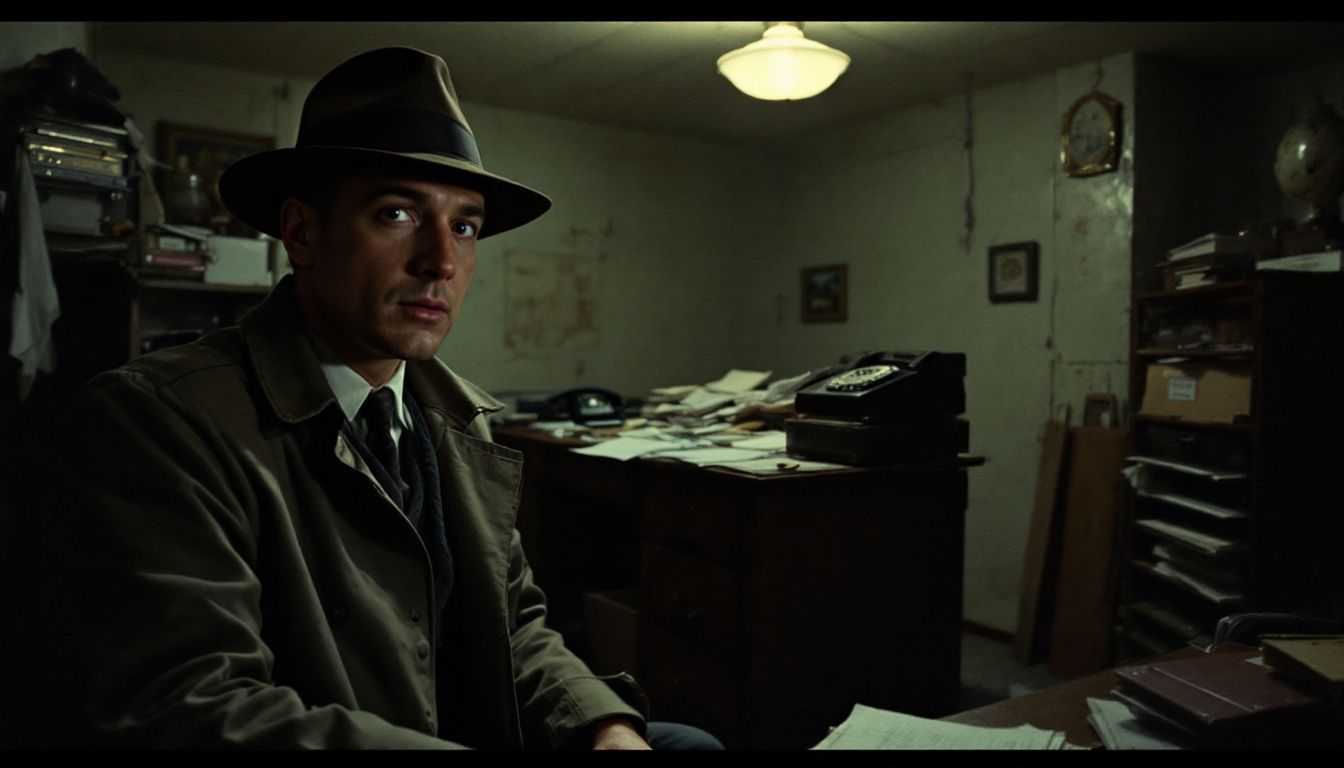
Murder Inc. started as a group of hired killers within the Italian-American Mafia. They used fear and violence to control their areas, working from back rooms and secret hideouts.
The founding of Murder Inc.
Murder Inc. started as the brainchild of powerful mobsters in the early 20th century. They wanted a group to handle their dirtiest work—eliminating rivals and anyone else who got in their way.
Albert Anastasia, known as “the Mad Hatter,” played a big role in setting it up. He was feared across the Italian-American Mafia for his ruthless methods.
We only kill each other. This quote captures the dark reality of Murder Inc., where betrayal was common, and loyalty was rare.
Vincent Mangano
Their combined influence laid down the foundation for what would become one of history’s most notorious criminal organizations, deeply involved in high-profile murders and various illegal activities under labels like La Cosa Nostra and Five Families.
Key operations and methodologies
After establishing Murder Inc., the group quickly became known for its ruthless efficiency. The organization had a strict way of working that kept it ahead of the law and competition.
- Use of hitmen – Murder Inc. hired skilled killers to carry out orders from mob bosses like Albert Anastasia and Lucky Luciano. These hitmen were often given their targets with little notice, ensuring quick and silent work.
- Secret signals – The group used a system of secret signs and codes to communicate. This method helped them avoid police detection.
- Blackmail – They gathered dirt on powerful people. This information forced those individuals to do what the mob wanted or face public shame.
- Control of unions – Vincent Mangano and others infiltrated labor unions, especially in New York’s garment industry. They used these positions to demand payments from businesses in return for labor peace.
- Gambling rackets – Operating illegal gambling setups provided a steady flow of money to the mob’s coffers. It also gave them leverage over addicted gamblers who might have useful information or skills.
- Narcotics trafficking – Despite initial reluctance, figures like Vito Genovese eventually pushed the Mafia into the narcotics trade, greatly boosting their wealth and power but also attracting more federal attention.
- Protection schemes – Businesses paid a fee to avoid trouble from thugs – often other members of Murder Inc disguised as independent criminals.
- Loan sharking – Loaning money at high interest rates got many desperate people in debt to the mob, giving gangsters yet another tool for control and influence.
- Infiltration of legitimate businesses – Mobsters invested in legitimate enterprises, using them as fronts for illegal activities or simply as a means to launder money.
- Political corruption – Bribes and threats ensured that certain politicians and law enforcement officials stayed on the Mafia’s side or at least turned a blind eye to their operations.
These methods made Murder Inc not just feared but deeply woven into both the underworld and segments of legitimate society, complicating efforts to bring them down for many years.
Notorious Acts and Crimes of the main Mobsters of Murder Inc.

Murder Inc. didn’t hold back in their criminal acts. They were behind some of the most famous murders and illegal activities in history.
High-profile murders and criminal activities
Murder Inc. carried out some of the most famous hits in mob history. Their crimes left a mark on American society.
- Albert Anastasia ordered the hit on Giuseppe Masseria during the Castellammarese War, changing Mafia power dynamics.
- Lucky Luciano plotted to kill Salvatore Maranzano, which ended a bloody gang war and led to the creation of the Commission.
- Under Anastasia’s orders, Murder Inc. killed many rivals, making him feared as “The Mad Hatter” and “Lord High Executioner.”
- Vincent Mangano disappeared in 1951; rumors say his own family might have been involved due to his feud with Anastasia.
- Abe Reles, a key Murder Inc. hitman, turned informant but was mysteriously thrown from a hotel window before he could testify more.
- The killing of Dutch Schultz by Charles Workman on Murder Inc.’s orders prevented Schultz from murdering a prosecutor.
- Murder Inc.’s role in the Lufthansa Heist showed their reach wasn’t just murder but also grand-scale theft.
- Frank Cali, a Gambino crime family boss, was assassinated outside his home in 2019, showing that mob violence still exists today.
These events lead into how law enforcement began cracking down on organized crime figures.
Trials and Legal Battles of the Main Mobsters
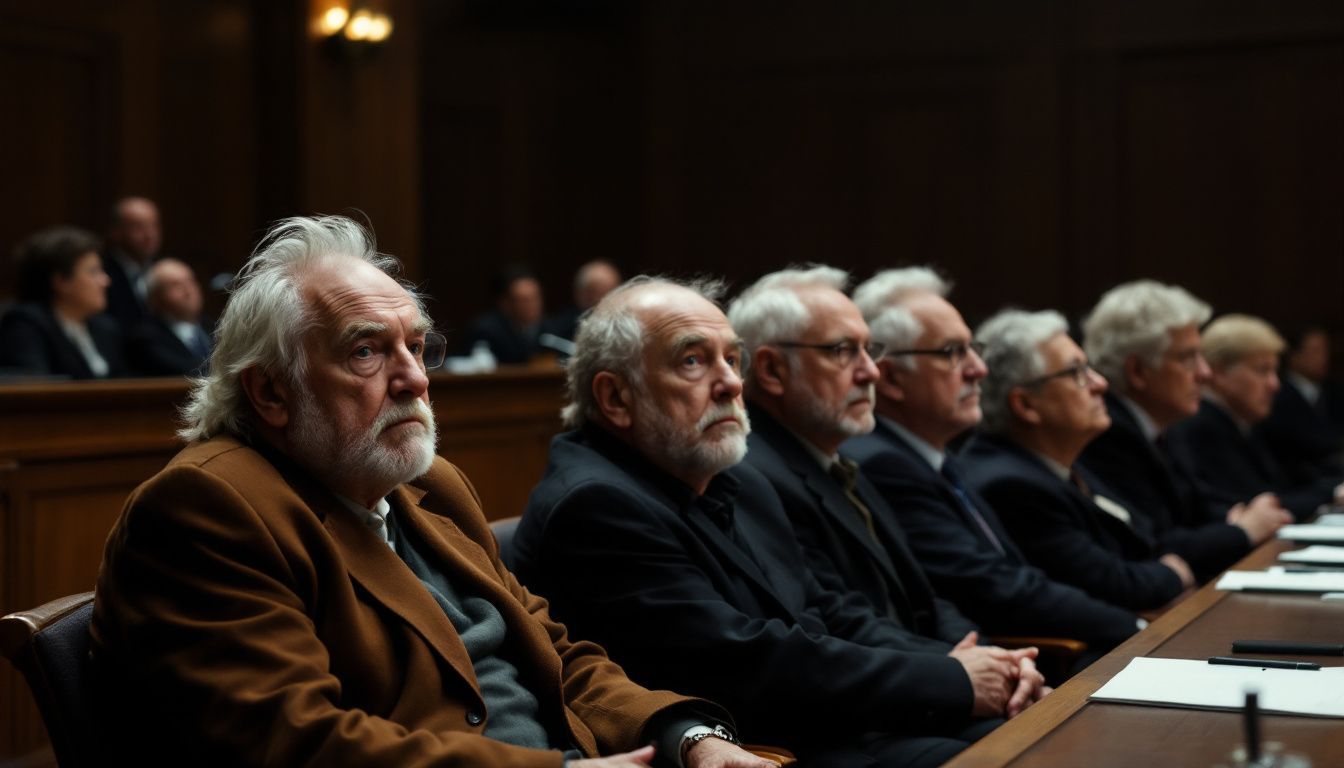
The courtroom dramas involving the main mobsters of Murder Inc. were as gripping as their crimes. Landmark trials put a spotlight on their illegal actions, leading to some big legal wins and losses for them.
Landmark trials involving key members
Landmark trials have been a big part of Mafia history. They offer a glimpse into the workings of organized crime.
- Albert Anastasia faced murder charges in the 1930s but avoided conviction due to lack of evidence and witnesses being too scared to testify.
- Lucky Luciano was tried in 1936 for running a prostitution ring. Thomas E. Dewey, a prosecutor, led the case against him. Luciano got a 30 to 50 years prison sentence but helped the U.S. navy during World War II and got his sentence shortened.
- Louis “Lepke” Buchalter, who ran Murder Inc. with Anastasia, was convicted for narcotics trafficking first and later for ordering murders, including that of Joe Rosen in 1936.
- The Apalachin Meeting in 1957 wasn’t a trial but showed law enforcement that the Mafia was real and organized across cities. Over 60 mobsters were arrested when they tried to flee from police at Joseph Barbara’s house.
- Vincent Mangano disappeared in 1951, sparking an internal Mafia war but no one ever went on trial for his presumed murder because his body was never found.
- Joe Valachi broke the Mafia’s code of silence in 1963 during the McClellan hearings, exposing Mafia secrets and operations to law enforcement and the public.
Moving on from these historical legal battles reveals how deeply these trials affected both the structure of organized crime and public perception of it over time.
Legal strategies and outcomes
After the trials of key mob members, their legal battles highlighted clever defenses and outcomes. Lawyers for the mobsters used smart moves to protect their clients. For instance, they questioned evidence to make it seem weak.
This approach sometimes led to not guilty verdicts for people like Albert Anastasia and Lucky Luciano.
The outcomes were mixed. Some gang leaders got long jail terms while others walked free due to lack of proof or witness fear. The trials showed how hard it is to bring down organized crime families like the Gambino family or the Lucchese family.
Even with strong charges, getting a conviction was tough because witnesses were scared or disappeared. This made it hard for courts to prove guilt beyond doubt.
Influence and Legacy
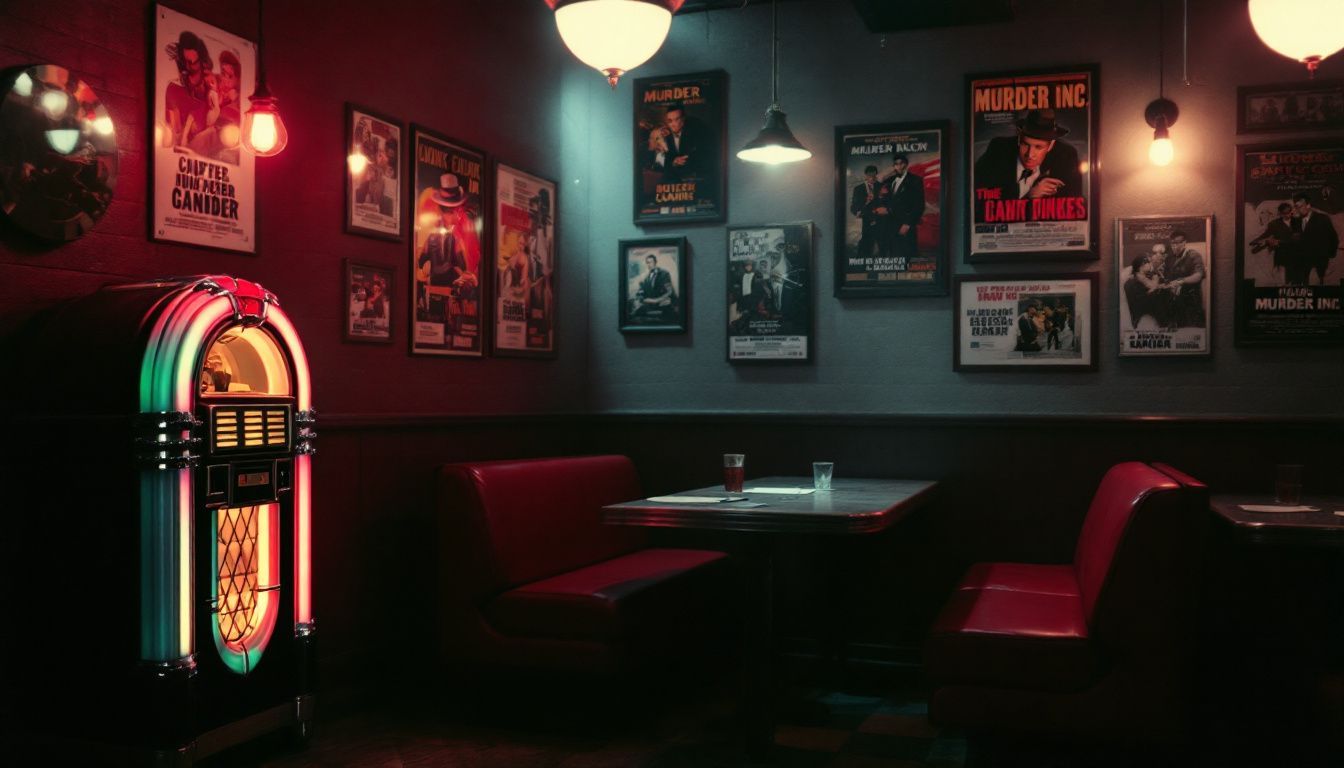
Murder Inc. changed how gangs worked and left a mark on pop culture. Movies, books, and TV shows like “The Sopranos” often show characters and stories inspired by these real-life main mobsters.
Impact on organized crime
Albert Anastasia and Lucky Luciano created a new kind of crime world. They were bosses in the American Mafia and led Murder Inc., a group known for doing the Mafia’s dirty work. This changed how organized crime worked.
They made it more structured, like a real business, but for illegal activities.
The only rules that really matter are these: what a man can do and what a man can’t do.
Their actions had big effects on other groups too. For example, the Gambino family grew stronger because of them. People started seeing crime families as powerful groups that could control things from behind the scenes.
This idea spread through stories in movies and books.
The RICO Act was made to fight this kind of organized crime. It let police charge whole groups instead of just one person at a time. This law became a big tool against mobsters, including those from the Colombo family and Genovese family later on.
Influence on media and public perception
The stories of Albert Anastasia, Lucky Luciano, and Vincent Mangano have a big effect on movies and books. Many films like “Goodfellas” show the life of mobsters. This makes people see them in a special way.
Some think they are just bad guys. Others see them as heroes who came from nothing.
TV shows also talk about these mobsters. They make us feel like we know them. People learn about the Gambino family and others from these shows. Even news stories keep talking about their crimes long after they happened.
All this changes how we see crime families today. We think we understand their world because of all the stories we hear and see.
Conclusion
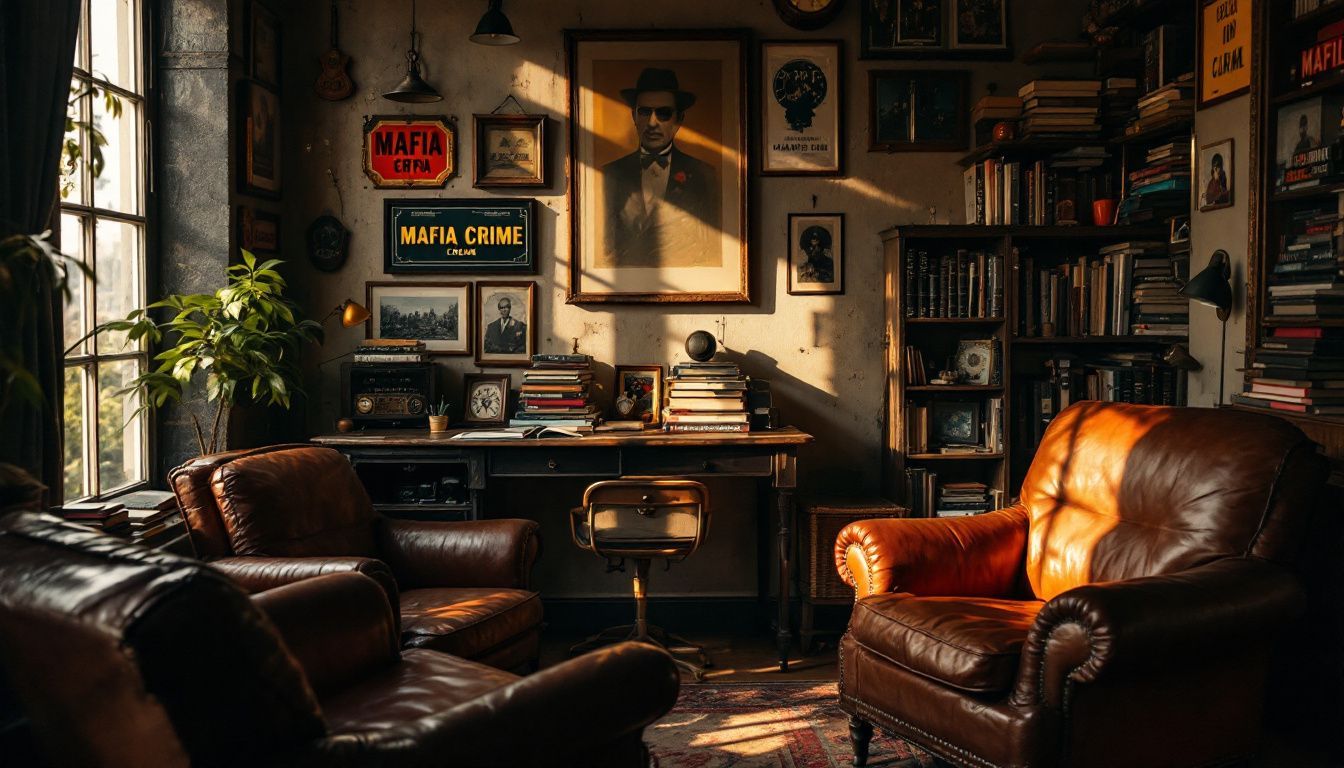
As the main mobsters Albert Anastasia, Lucky Luciano, and Vincent Mangano made Murder Inc. what it was. They showed how power and fear could control the underworld. Their methods were sharp and led to their rise in organized crime.
Movies and books still tell their stories today, showing their mark on history.
These main mobsters, through their actions, offer lessons in strategy and influence. You can see how they built an empire that lasted decades. For anyone looking into the past of American crime, these men are key figures.
Learning from history helps us understand today’s challenges better. Think about what drove these men to seek such power. It makes one reflect on the paths we choose.
Let their stories inspire you to dig deeper into history. There is much more to learn from the past than we often realize.
FAQs
1. Who were the main mobsters of Murder Inc?
The main mobsters of Murder Inc were Albert “the mad hatter” Anastasia, Charlie “Lucky” Luciano, and Vincent Mangano. They worked alongside other notorious Italian-American gangsters like Carlo Gambino, John Gotti, Joseph Bonanno and Paul Castellano.
2. What was the role of Albert Anastasia in Murder Incorporated?
Albert Anastasia played a significant role in Murder Incorporated. Known as “the Mad Hatter”, he was part of the Brownsville Boys and later became a prominent figure in the Mangano family and his own Anastasia family.
3. Can you tell me more about Lucky Luciano’s involvement with this crime syndicate?
Lucky Luciano, whose real name is Charles Luciano, was one of the most influential mobsters ever. He founded both the Genovese crime family and the Luciano Family which had strong ties to murder incorporated.
4. Was there any connection between these figures and other families or organizations?
Yes indeed! These key figures interacted with several notable personalities from different families such as Louis Lepke from Buchalter family, Tommy Lucchese from luccheses family or even Salvatore “Sammy The Bull” Gravano linked to Bonanno crime family.
5. How did these criminals affect their communities at large?
These infamous characters wielded considerable power within their communities often controlling unions like International Longshoremen’s Association or influencing major criminal activities that led to U.S citizenship scrutiny for many involved parties.
6.Who were some notable figures associated with them?
Some notable associates include Joe Gallo known for his rebellious nature against Colombo Family; Willie Sutton who collaborated closely with Arnold Schuster; Abe “Kid Twist” Reles a feared hitman under Louis Capone; Joseph Pistone an undercover FBI agent famously known as Donnie Brasco infiltrating Bonanno family and Vincent Asaro linked to Lucchese crime family.


 Cart is empty
Cart is empty 






